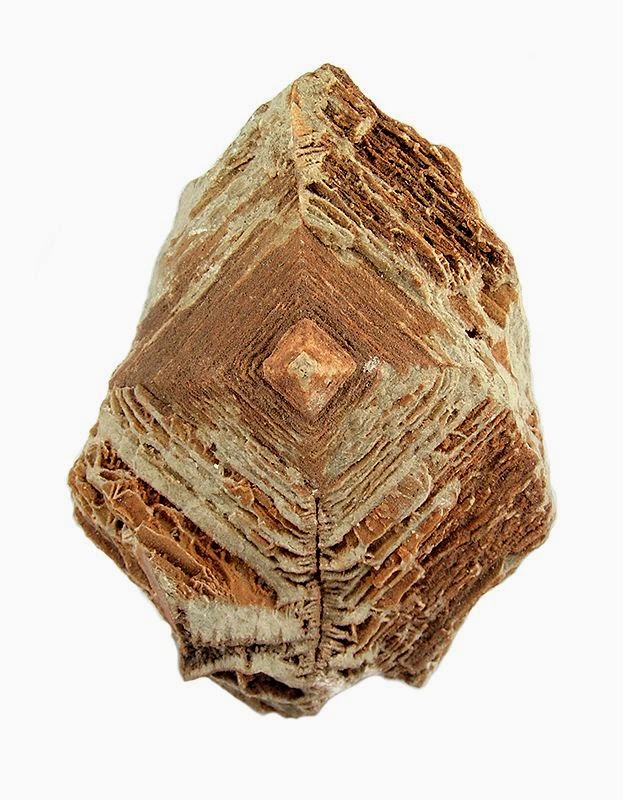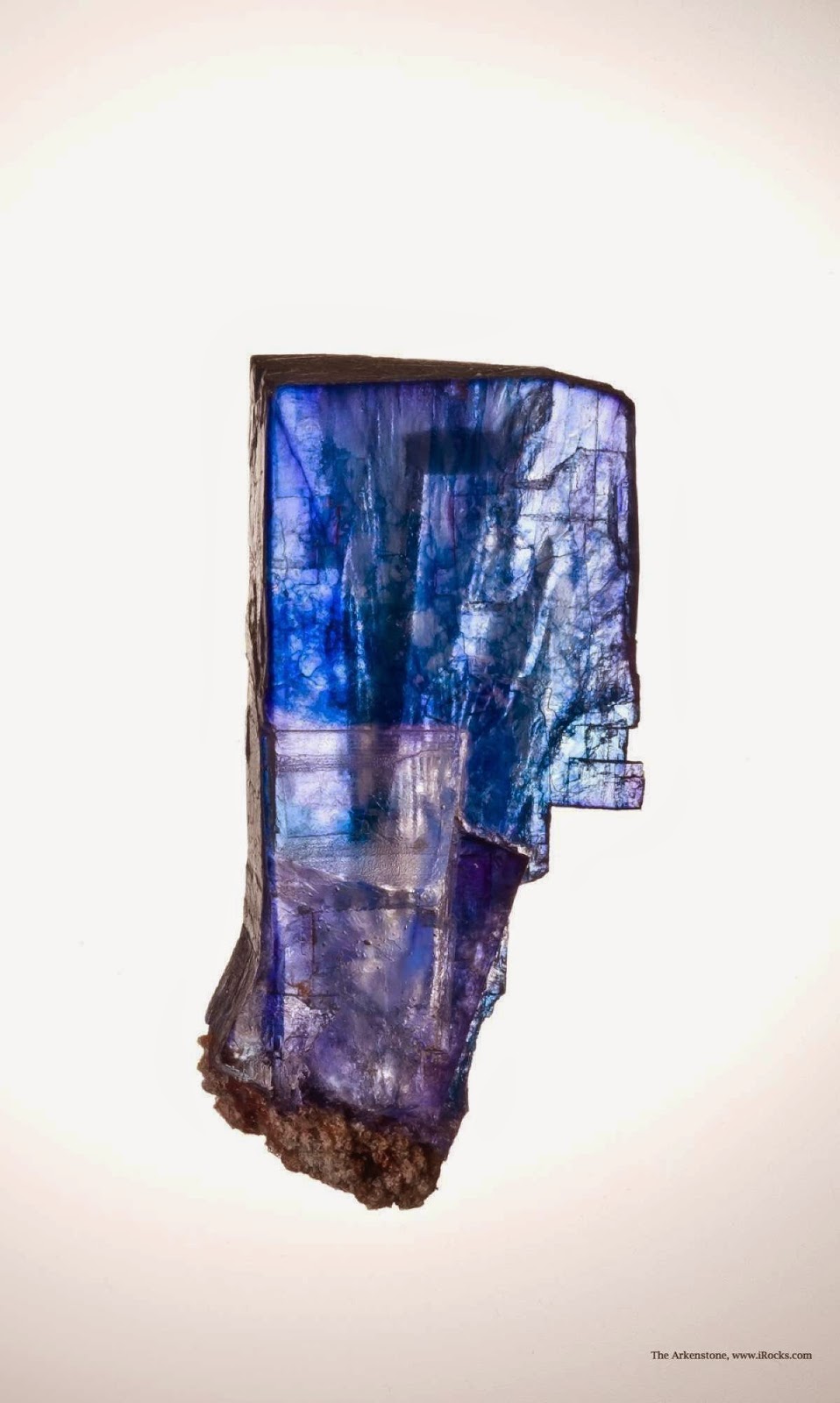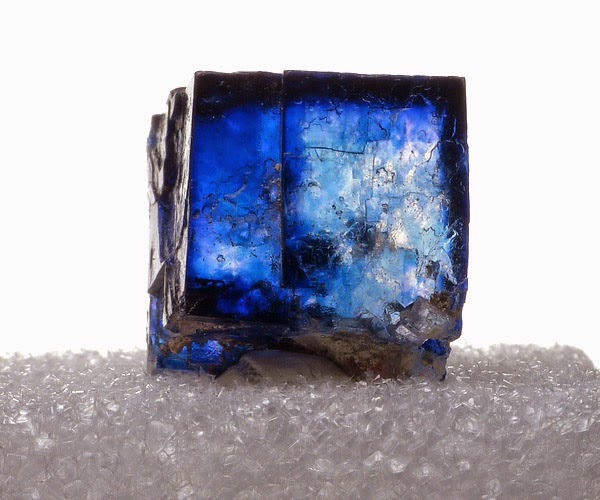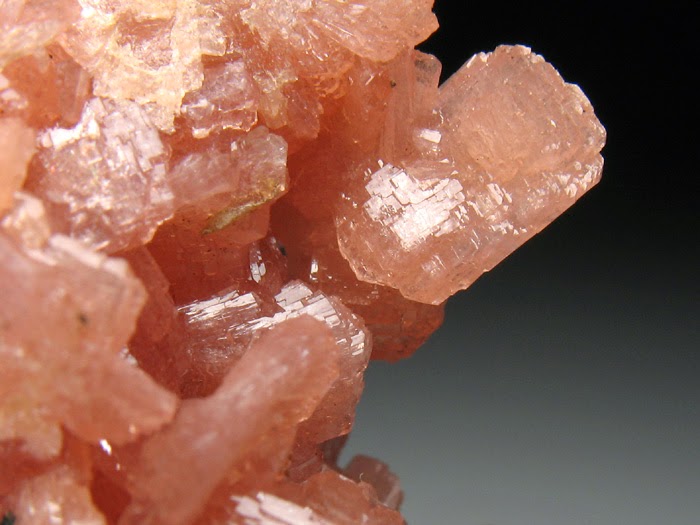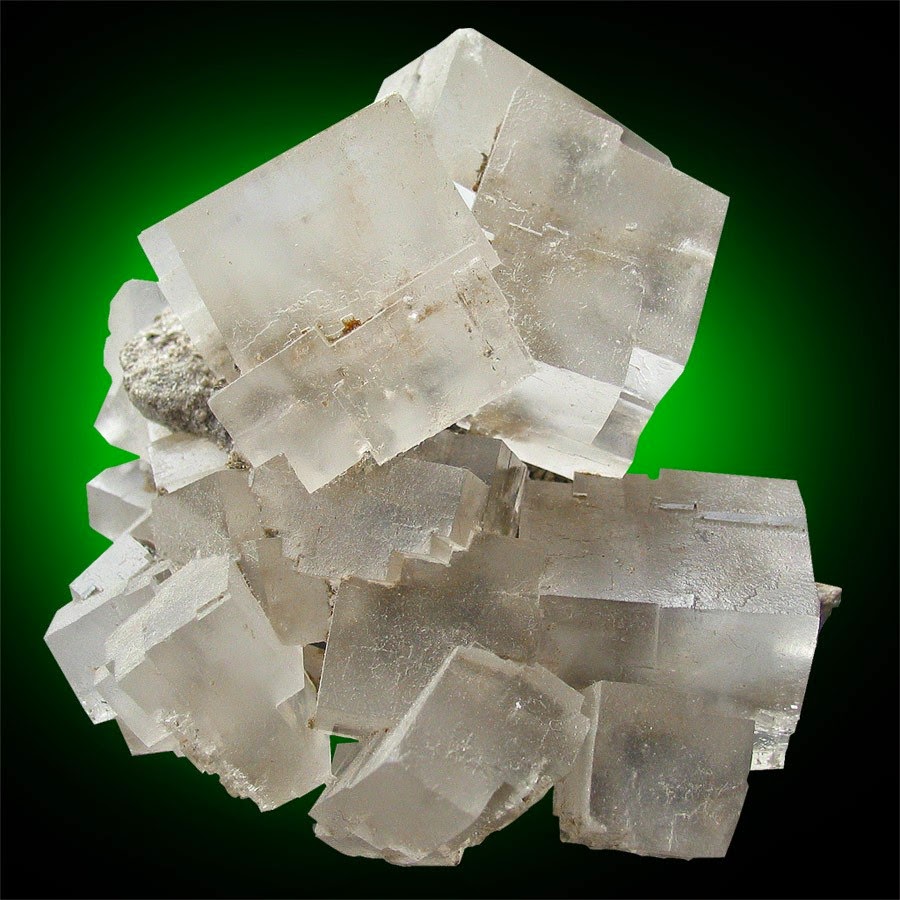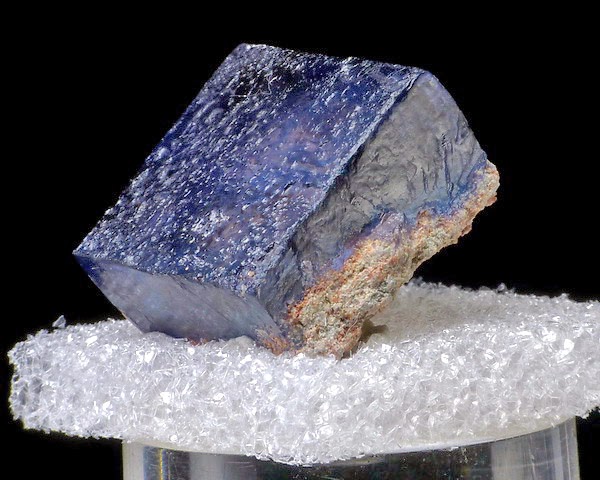
Chemical Formula: NaCl
Locality: World wide in sedimentary basins.
Name Origin: From the Greek halos, meaning “salt” and lithos meaning “rock.”
Halite commonly known as rock salt, is the mineral form of sodium chloride (NaCl). Halite forms isometric crystals. The mineral is typically colorless or white, but may also be light blue, dark blue, purple, pink, red, orange, yellow or grey depending on the amount and type of impurities. It commonly occurs with other evaporite deposit minerals such as several of the sulfates, halides, and borates.
Occurrence
Halite occurs in vast beds of sedimentary evaporite minerals that result from the drying up of enclosed lakes, playas, and seas. Salt beds may be hundreds of meters thick and underlie broad areas. In the United States and Canada extensive underground beds extend from the Appalachian basin of western New York through parts of Ontario and under much of the Michigan Basin. Other deposits are in Ohio, Kansas, New Mexico, Nova Scotia and Saskatchewan. The Khewra salt mine is a massive deposit of halite near Islamabad, Pakistan. In the United Kingdom there are three mines; the largest of these is at Winsford in Cheshire producing half a million tonnes on average in six months.
Salt domes are vertical diapirs or pipe-like masses of salt that have been essentially “squeezed up” from underlying salt beds by mobilization due to the weight of overlying rock. Salt domes contain anhydrite, gypsum, and native sulfur, in addition to halite and sylvite. They are common along the Gulf coasts of Texas and Louisiana and are often associated with petroleum deposits. Germany, Spain, the Netherlands, Romania and Iran also have salt domes. Salt glaciers exist in arid Iran where the salt has broken through the surface at high elevation and flows downhill. In all of these cases, halite is said to be behaving in the manner of a rheid.
Physical Properties
Cleavage: {100} Perfect, {010} Perfect, {001} Perfect
Color: White, Clear, Light blue, Dark blue, Pink.
Density: 2.17
Diaphaneity: Transparent
Fracture: Brittle – Generally displayed by glasses and most non-metallic minerals.
Hardness: 2.5 – Finger Nail
Luminescence: Fluorescent, Short UV=red, green (organic inclusions) orange, Long UV=red, green orange.
Luster: Vitreous (Glassy)
Magnetism: Nonmagnetic
Streak: white
Photos :
